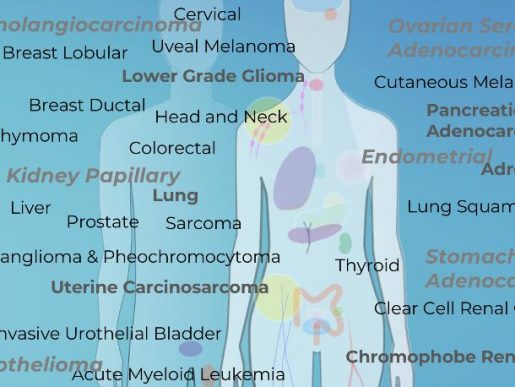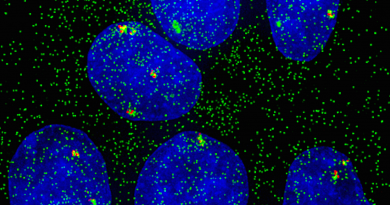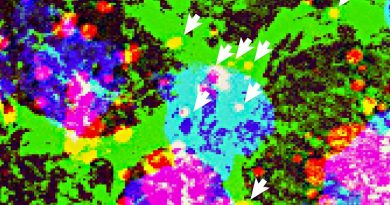What extensive protein analysis revealed about cancer
Cancer is currently understood not as a single disease, but as a collection of diseases that can develop through alterations in different molecular pathways. This view of cancer has led some researchers to take large-scale analytical approaches to better understand how the disease can happen.

For instance, Dr. Chad Creighton at Baylor College of Medicine and his colleagues conducted an extensive computational analysis of data from molecular profiling technologies to sort out protein alterations that could be linked to cancer.

“We analyzed both the similarities and differences in the entire set of proteins, called the proteome, of more than 500 cancers from five different tissue sites,” said Creighton, associate professor of medicine and co-director of Cancer Bioinformatics of the Dan L Duncan Comprehensive Cancer Center at Baylor.
Creighton and his colleagues and other groups have traditionally approached molecular profiling by analyzing mRNA rather than protein data. Messenger RNA (mRNA) is the genetic material that is actually translated into proteins.
“When looking at mRNA data, it’s assumed that they represent what happens at the actual protein level, but this is not always the case,” Creighton said. “Proteins can be modified after they are synthesized, for example, and this is something mRNA data would not show. Nevertheless, most studies do not acquire protein data.”
In the current study the researchers analyzed protein data, looking to identify molecular pathways that previous mRNA data analyses might have missed.
Creighton and colleagues worked with data from the Clinical Proteomic Tumor Analysis Consortium (CPTAC), which conducted proteomic profiling of more than 10,000 proteins in hundreds of cancers. They also examined cancer protein and mRNA datasets outside of CPTAC. In total, the researchers analyzed data from more than 500 cancers representing five types of cancer: breast, colon, ovarian, renal and uterine.
Protein profiling reveals potential new players in cancer
Analysis of the protein data led to the classification of the cancers into 10 subtypes, each with a distinct set of protein alterations. The subtypes included multiple organ tissue sites sharing common altered molecular pathways. Knowing the pathways suggests potential therapeutic opportunities.
“We found that many of the subtypes that we had found based on mRNA observations that we made before held up when we looked at the protein level,” Creighton said. “Interestingly, four of these 10 subtypes actually do not involve the cancer cells themselves. They represent differences in the tumor microenvironment, the cells and tissues that surround the tumor, and these subtypes are very distinct from each other.”
Two of the four subtypes involved immune components associated with the tumor microenvironment. The first immune subtype was characterized by the presence of immune T cells. The second immune subtype, on the other hand, highlighted the complement activation pathway, which is an important component of tumor-promoting inflammation thought to play a role in cancer initiation and progression.
Previous studies appear to have missed the complement pathway as being associated with cancer subtypes. Another novel finding was the discovery of three cancer subtypes that had not been identified in previous mRNA-based analyses.
“Some of the pathways we found associated with these three subtypes may not be commonly associated with human cancers, but links to them have been found,” Creighton said. “One subtype involved the Golgi apparatus of the cell. Reports have linked the Golgi to malignant transformation, for instance. Another subtype, which was specific to renal carcinoma, was associated with hemoglobin increases. Finally, the third subtype involved the endoplasmic reticulum, an intracellular component.”
The researchers hope that studies like this will shed some light on some of these pathways that are not well studied in relation to cancer and stimulate further research that may lead to improved therapies or to novel treatments that could benefit patients that do not respond to therapy.
Read about all the findings of this study in the journal Nature Communications.
Other contributors to this work include Fengju Chen, Darshan S. Chandrashekar and Sooryanarayana Varambally. The authors are affiliated with one or more of the following institutions: Baylor College of Medicine, University of Alabama at Birmingham and the University of Texas MD Anderson Cancer Center.
This work was supported in part by National Institutes of Health (NIH) grant P30CA125123.



